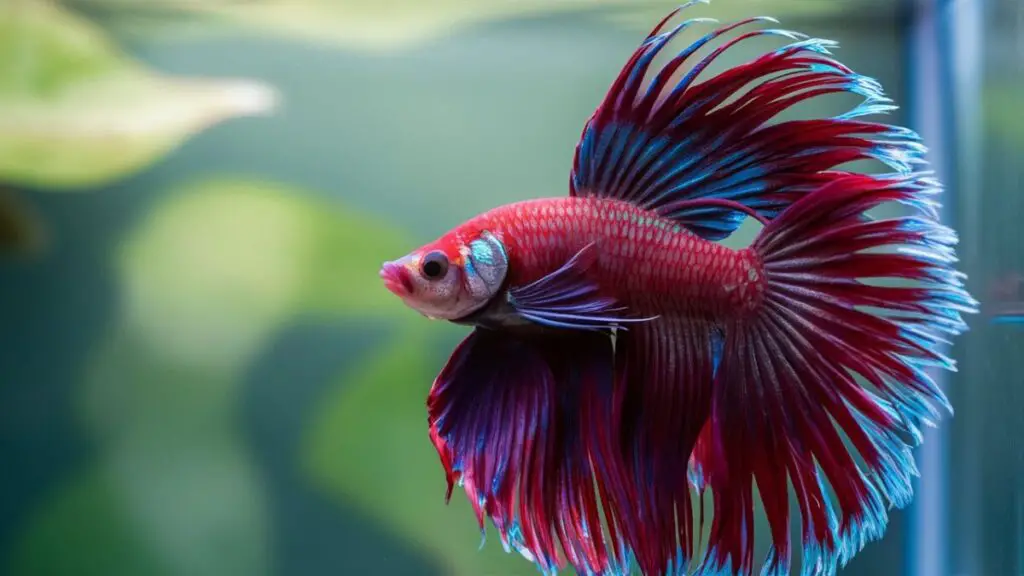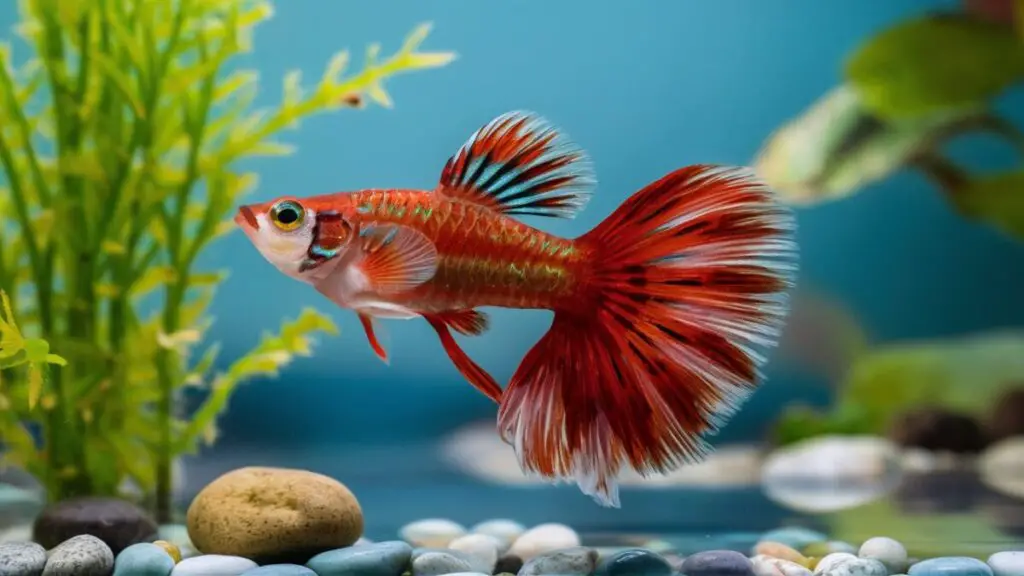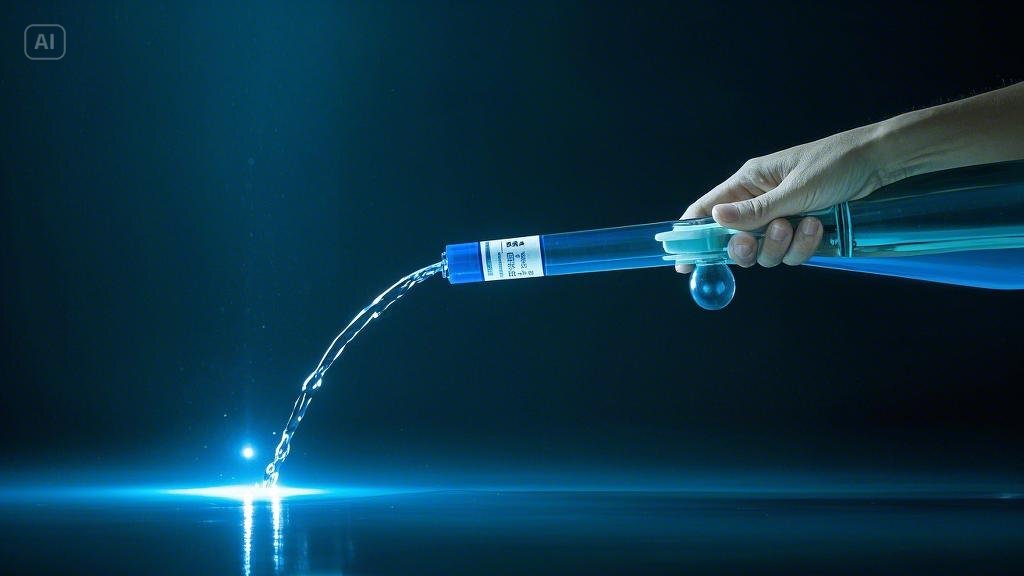The Best Freshwater Fish for Beginners, Establishing an aquarium in your house provides an intriguing insight into the aquatic world.
But picking the correct fish is a challenging first step. It’s important for novices to choose species that are mutually compatible, hardy, and low maintenance.
This book will discuss the best freshwater fish for beginners, including Betta fish, neon tetras, guppies, platies, zebra danios, Corydoras catfish, and mollies.
These species are well-known for their hardiness and low maintenance needs, which makes them perfect for beginning aquarium keepers.
We’ll talk about their individual requirements, personalities, and the best tank configurations to help guarantee a fruitful and pleasurable aquarium experience.
This article will assist you in choosing the right supplies for a healthy freshwater aquarium, regardless of whether you’re starting with a tiny tank or designing a bigger community setup.
Coralife LED BioCube Aquarium Fish Tank Kit, 32 Gallon
Understanding Freshwater Aquariums
Before delving into specific fish species, it’s essential to understand the basics of freshwater aquariums. Freshwater tanks can range from small, desktop aquariums to large, elaborate setups. The key elements include:
- Tank Size: Larger tanks are generally easier to maintain as they provide a more stable environment.
- Filtration: A good filter helps maintain water quality by removing waste and toxins.
- Heater and Thermometer: Most freshwater fish require a consistent water temperature.
- Water Quality: Regular water changes and testing are crucial to keeping fish healthy.
- Decor and Plants: Adding hiding places and plants can make fish feel secure and reduce stress.

Top Freshwater Fish for Beginners
1. Betta Fish (Betta splendens)
Care Level: Easy
Size: Up to 3 inches
Tank Requirements: Minimum 5 gallons, warm water (75-80°F)
Aquarium aficionados know and love betta fish for their vibrant colors and wavy fins. Many aquarists choose these eye-catching fish, also known as Siamese fighting fish, because of their remarkable array of colors and patterns.
Betta fish are known as labyrinth fish because they have a special organ that enables them to breathe atmospheric air.
Compared to other fish species, they are more robust and adaptive to changing water conditions because of their special adaptation.
Light water flow is ideal for betta tanks because strong currents can stress and harm the fish’s sensitive fins.
Additionally, they need warm water—ideally between 75 and 80°F—which is somewhat similar to their native Southeast Asian environment.
These environmental factors contribute to the health and vibrancy of bettas, making them a wonderful option for novice and expert fish keepers alike.
Pros:
- Hardy and adaptable
- Do not require aeration
- Can be kept in smaller tanks
Cons:
- Males are aggressive towards each other
- Need warm water

2. Neon Tetra (Paracheirodon innesi)
Care Level: Easy
Size: Up to 1.5 inches
Tank Requirements: Minimum 10 gallons, stable pH, and temperature
Neon tetras are small, colorful fish distinguished by their eye-catching red and blue stripes.
These striking fish are a favorite for community aquariums because they thrive in classroom settings.
They are perfect for beginners because of their tranquil temperament, which enables them to live in harmony with other non-aggressive species.
The best environments for neon tetras to live in are ones with plenty of plants and lots of hiding places.
They prefer dim illumination because it accentuates their hues and closely resembles their native environment. Regular water changes and the maintenance of steady water conditions are crucial for the health of neon tetras.
They are a pleasant addition to any freshwater tank because of their modest size and laid-back demeanor.
Pros:
- Peaceful and good for community tanks
- Low maintenance
- Vibrant colors
Cons:
- Sensitive to water changes
- Best kept in schools
Coralife LED BioCube Aquarium Fish Tank Kit, 32 Gallon

3. Guppy (Poecilia reticulata)
Care Level: Very Easy
Size: Up to 2.5 inches
Tank Requirements: Minimum 10 gallons, can tolerate a range of temperatures
Because of their vivid colors and energetic personalities, guppies are a popular option for novice aquarists.
Not only are these tough little fish simple to maintain, but they also liven up any aquarium with a pop of color.
Guppies are special because they are livebearers, which means that rather than laying eggs, they give birth to fully developed, free-swimming young.
Maintaining males and females together can result in a rapid population increase, making guppies an excellent option for fish breeders.
Their capacity to adapt to a variety of temperatures and water conditions adds to their allure, making them the perfect species for beginning fishkeepers who want to create a vibrant, flourishing aquarium.
Pros:
- Very hardy and adaptable
- Colorful and lively
- Reproduce easily
Cons:
- Can overpopulate quickly
- Males can harass females if not in the right ratio

4. Platy (Xiphophorus maculatus)
Care Level: Easy
Size: Up to 2.5 inches
Tank Requirements: Minimum 10 gallons, slightly alkaline water
Platies are another livebearing species with a wide range of hues and patterns.
They are ideal for beginners because they are calm and easy to maintain.
Because platties are quite gregarious, it is preferable to keep them in groups. These colorful fish get along nicely with other calm species in a communal aquarium.
Although they may survive in a variety of water types, plaques prefer slightly alkaline water that is consistently at a consistent temperature.
They are a popular choice for first-time aquarists who want to add color and movement to their tanks because of their resilient nature and laid-back attitude.
Furthermore, platies breed frequently, so be prepared for potential offspring. These fish may be a fun and gratifying addition to any freshwater aquarium given the right care.
Pros:
- Hardy and adaptable
- Peaceful and good for community tanks
- Easy to breed
Cons:
- May eat their young
- Can overpopulate

5. Zebra Danio (Danio rerio)
Care Level: Very Easy
Size: Up to 2 inches
Tank Requirements: Minimum 10 gallons, can tolerate a wide range of conditions
Zebra Danios’ robust constitution and active lifestyle make them ideal for novice aquarists.
The characteristic horizontal stripes that run the length of their sleek bodies make it simple to identify these little, vivacious fish. They are a wonderful addition to any community tank, and they flourish in educational settings.
Zebra Danios’ adaptability to a variety of water conditions, including changes in pH and temperature, is one of its most amazing traits.
Their placid disposition, combined with their adaptability, makes them a great option for novice fishkeepers.
Their lively swimming patterns also provide aquariums with a dynamic and captivating aspect, which is why both inexperienced and seasoned fish fans choose them.
Pros:
- Extremely hardy
- Very active and interesting to watch
- Peaceful and good for community tanks
Cons:
- May nip fins of slower fish
- Require a covered tank as they are good jumpers
The Best Freshwater Fish for Beginners

6. Corydoras Catfish (Corydoras spp.)
Care Level: Easy
Size: Up to 3 inches
Tank Requirements: Minimum 20 gallons, soft substrate
A common freshwater fish, corydoras catfish are excellent additions to community aquariums because of their calm and gregarious disposition.
Because they are bottom-dwellers, they spend a lot of time scouring the tank floor, where they eat trash and leftover food, keeping the surrounding area clean.
They are essential components of any aquarium design because of their innate cleaning activity.
To find food, corydoras use their sensitive barbels—whiskered organs—near their mouths. Rough surfaces can injure these barbels, so it’s critical to have a soft substrate in their aquarium, like sand, to protect them.
Keeping a minimum of four to six fish together ensures that these placid fish feel safe and may exhibit their natural habits.
Both novice and expert aquarists will find Corydoras catfish to be perfect because of its robust nature and low care requirements.
Pros:
- Peaceful and suitable for community tanks
- Good scavengers
- Come in various species and sizes
Cons:
- Require a group of at least 4-6
- Sensitive to sharp substrates
5 Gallon Fish Tank – Arc-Shaped Glass Fish Tank

7. Mollies (Poecilia sphenops)
Care Level: Easy
Size: Up to 4 inches
Tank Requirements: Minimum 20 gallons, prefer slightly brackish water
Livebearers often choose mollies because of their diverse range of colors and forms. These flexible fish are suitable for a variety of tank configurations because they can thrive in both freshwater and slightly brackish water.
Mollies provide vitality and movement to any aquarium due to their vigorous swimming. They get along nicely with other fish and are generally calm; however, they occasionally act aggressively toward tankmates that are smaller or move more slowly.
Mollies need a balanced diet and plenty of room to live in harmony in their tanks. Their low maintenance requirements and captivating demeanor appeal to both novice and seasoned aquarists.
Pros:
- Adaptable to a wide range of water conditions
- Attractive and varied in appearance
- Breed easily
Cons:
- Can be aggressive
- Need a larger tank for their size
Essential Tips for Beginner Aquarists
- Cycle Your Tank: Before adding fish, ensure your tank is cycled to establish beneficial bacteria that process fish waste. This prevents harmful ammonia and nitrite spikes.
- Research Compatibility: Not all fish get along. Research the species you’re interested in to ensure they can coexist peacefully.
- Avoid Overfeeding: Overfeeding is a common mistake that leads to poor water quality. Feed your fish small amounts they can consume within a few minutes.
- Regular Maintenance: Regular water changes, typically 10-20% weekly, help maintain water quality. Clean the substrate and decorations to remove debris.
- Monitor Water Parameters: Regularly test the water for ammonia, nitrite, nitrate, pH, and temperature. Keeping these parameters stable is crucial for fish health.
- Quarantine New Fish: New fish can carry diseases. Quarantine them for a few weeks before adding them to your main tank.

Conclusion
Establishing an aquarium is a fulfilling endeavor that blends education with the delight of witnessing marine life.
For novices, the secret to building a successful and colorful tank is choosing species that are resilient and simple to maintain.
It is important to learn about the particular needs of each species, including those related to food preferences, tankmates, and water quality.
To guarantee a healthy habitat for your fish, keep up a regular care schedule that includes frequent water changes and quality checks.
With the right planning and care, you can have a gorgeous, healthy freshwater aquarium that offers you endless fun and a glimpse into the intriguing world below the surface.
Hooked on Tech: Exploring the latest Fishing Gadgets that Anglers swear by.
In the realm of angling, where tradition and technology often converge, a new wave of fishing gadgets has emerged, transforming the way anglers approach their craft.
From advanced fish finders to smart bait systems, these innovations have not only revolutionized the fishing experience but have also garnered a loyal following among anglers worldwide.
Fishing Kit,Filleting Knife,Hook Remover,Fish Grip, Line Cutter,Fishing Scale, Pliers with Lanyards,Not Include Batteries
$23.99 (as of November 18, 2025 16:24 GMT +00:00 – More infoProduct prices and availability are accurate as of the date/time indicated and are subject to change. Any price and availability information displayed on [relevant Amazon Site(s), as applicable] at the time of purchase will apply to the purchase of this product.)Berkley PowerBait MaxScent Flux-Gill
$9.99 (as of November 18, 2025 22:28 GMT +00:00 – More infoProduct prices and availability are accurate as of the date/time indicated and are subject to change. Any price and availability information displayed on [relevant Amazon Site(s), as applicable] at the time of purchase will apply to the purchase of this product.)Anezus Fishing Wire for Hanging, Clear Fishing Line Invisible String Strong Monofilament Line for Hanging Decorations and Crafts
$6.99 (as of November 18, 2025 04:58 GMT +00:00 – More infoProduct prices and availability are accurate as of the date/time indicated and are subject to change. Any price and availability information displayed on [relevant Amazon Site(s), as applicable] at the time of purchase will apply to the purchase of this product.)Dr.meter Fish Scale Luggage Scale Fishing Gear – 110lb Backlit LCD Display Digital Scale with Built-in Measuring Tape – Fishing Scale with 2 AAA Batteries, Pocket Size – Fishing Gifts for Men
$8.99 (as of November 18, 2025 04:58 GMT +00:00 – More infoProduct prices and availability are accurate as of the date/time indicated and are subject to change. Any price and availability information displayed on [relevant Amazon Site(s), as applicable] at the time of purchase will apply to the purchase of this product.)THKFISH 7Pcs Fishing Backpack with Fishing Pliers Kit, Tactical Fish Sling Tackle Bag Included Fishing Tackle kit, Digital Fishing Gear Weight Scale, Fish Hook Remover Tools
$28.99 (as of November 19, 2025 01:21 GMT +00:00 – More infoProduct prices and availability are accurate as of the date/time indicated and are subject to change. Any price and availability information displayed on [relevant Amazon Site(s), as applicable] at the time of purchase will apply to the purchase of this product.)MEIYA Fish Scale 110lb/50kg Digital Fishing Scale with Backlit LCD, Portable Handle, Stainless Steel Hook & 2 AAA Batteries – Reliable Fishing Gear & Great Fishing Gifts for Men
$6.99 (as of November 18, 2025 04:58 GMT +00:00 – More infoProduct prices and availability are accurate as of the date/time indicated and are subject to change. Any price and availability information displayed on [relevant Amazon Site(s), as applicable] at the time of purchase will apply to the purchase of this product.)Bomber Lures Long A Slender Minnow Jerbait Fishing Lure
$10.39 (as of November 18, 2025 04:58 GMT +00:00 – More infoProduct prices and availability are accurate as of the date/time indicated and are subject to change. Any price and availability information displayed on [relevant Amazon Site(s), as applicable] at the time of purchase will apply to the purchase of this product.)GOMEXUS Fish Lip Gripper, Portable Lightweight Fish Gripper, Aluminium Fish Grabber Tool, Lip Grippers Fishing, Mini Fishing Gripper with Lanyard
$14.95 (as of November 18, 2025 22:28 GMT +00:00 – More infoProduct prices and availability are accurate as of the date/time indicated and are subject to change. Any price and availability information displayed on [relevant Amazon Site(s), as applicable] at the time of purchase will apply to the purchase of this product.)PLUSINNO Fishing Net Fish Landing Net, Foldable Collapsible Telescopic Pole Handle, Durable Nylon Material Mesh, Safe Fish Catching or Releasing
$18.97 (as of November 18, 2025 23:58 GMT +00:00 – More infoProduct prices and availability are accurate as of the date/time indicated and are subject to change. Any price and availability information displayed on [relevant Amazon Site(s), as applicable] at the time of purchase will apply to the purchase of this product.)Boomerang Tool Company SNIP Fishing Line Cutters with Retractable Tether and Stainless Steel Blades that Cut Braid, Mono and Fluoro Lines Clean and Smooth!
$14.19 (as of November 18, 2025 02:18 GMT +00:00 – More infoProduct prices and availability are accurate as of the date/time indicated and are subject to change. Any price and availability information displayed on [relevant Amazon Site(s), as applicable] at the time of purchase will apply to the purchase of this product.)Berkley PowerBait Chop Block Fishing Soft Bait
Now retrieving the price.
(as of November 18, 2025 22:28 GMT +00:00 – More infoProduct prices and availability are accurate as of the date/time indicated and are subject to change. Any price and availability information displayed on [relevant Amazon Site(s), as applicable] at the time of purchase will apply to the purchase of this product.)
























